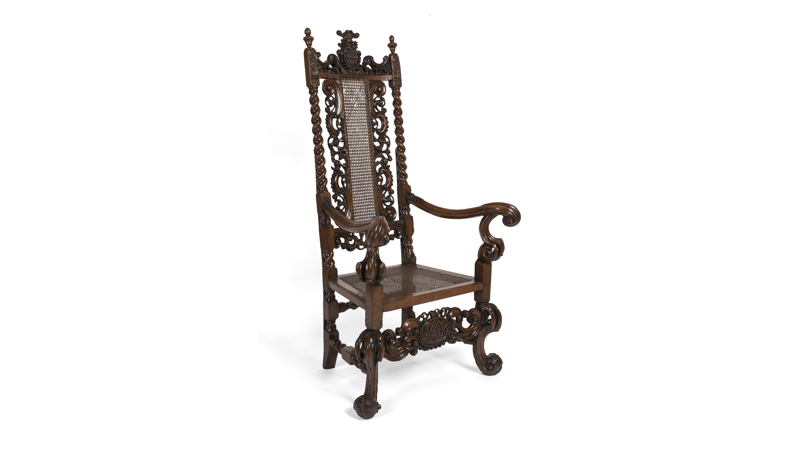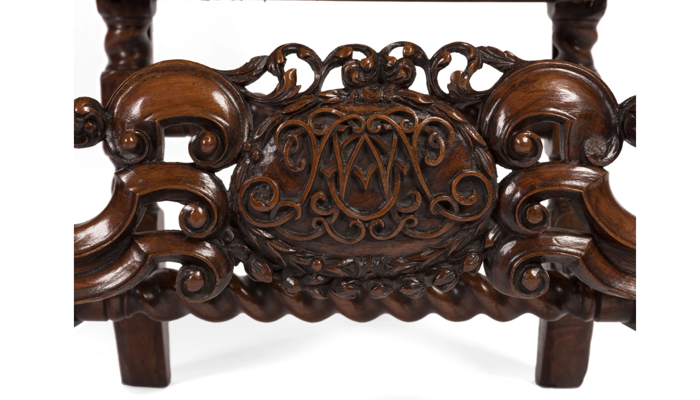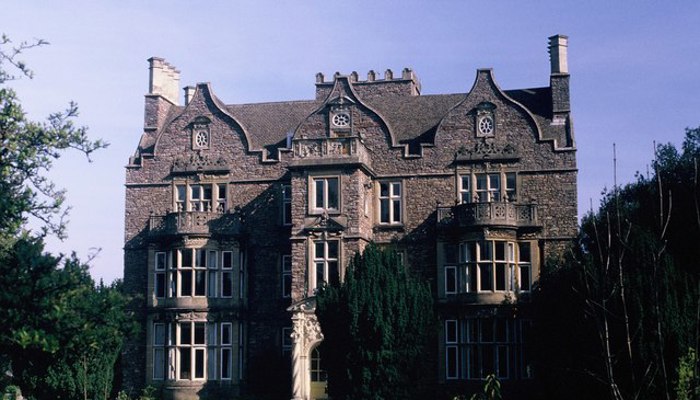
A Seat of Power

Chair carved with the coat of arms of the Cann family of Bristol, inscribed with the date 1699.
Glasgow Museums, Burrell Collection, 14.159
Images © CSG CIC Glasgow Museums Collection
26th August 2020
Although it is highly likely that the Cann family used enslaved people from the African continent to work their plantations, there is evidence to suggest that they originally used white indentured servants. In 1685, Robert Cann was fined for illegally taking criminals from Britain to work on his plantations. Curiously, in 1663, he had lent his support towards the passing of a law that would ban the kidnapping of white children to be sent to work in plantations. The implication, 22 years later, of Cann kidnapping criminals for his plantations shows the increased pressure for plantation owners to find cheap labour to produce the highly sought-after sugar, tobacco, and rum produced there.
The use of white indentured servants was employed by several Bristol plantation owners in the seventeenth century, as trading in enslaved African people was not an option for them at the time. The Royal African Company had been granted a royal charter by King Charles II in 1660, granting them a monopoly in the trade along the West Coast of Africa, including the trade of enslaved Africans. Some Bristol merchants were affiliated with the Royal African Company, including the merchant Edward Colston, who was Deputy Governor from 1698-99.
Images



After five or seven years’ service, an indentured servant’s contract would finish and they would be granted money or land as payment. The use of enslaved people from the African continent offered much more profitable labour as slaves were owned for life, without pay, and any children they had would be enslaved also, increasing the labour force of the white owner.
The increasing demand for sugar, tobacco, and rum led many European plantation owners wanting to buy and trade in enslaved African people. Desperate to make profit from the lucrative African trade, the Society of Merchant Venturers of Bristol had been secretly trading in slave labour since the second half of the seventeenth century. Sir Robert Cann had played an active role in the Merchant Venturers, joining in 1646, and acting as Treasurer from 1653-4, and Master from 1658-9. In 1698, a year before the Cann armchair chair was made, the Merchant Venturers successfully challenged the Royal African Company monopoly which meant they were now legitimately able pursue this trade.
As for the chair, it can be interpreted as an example of the luxurious commodities European plantation owners commissioned to decorate their homes. The front stretcher of the chair has a carved cipher of ‘WC’, probably for either Sir William Cann, 2nd Baronet (d.1698), or for his son, also William (1694-1726), who became the 3rd Baronet in 1698, the same year the slave trade opened to Bristol merchants. This chair would have been kept in one of the numerous Cann family homes, standing as a commemorative symbol of the Cann family legacy and a seat of Bristol merchant power. One of their homes, Stoke House, can still be seen in Bristol today.
Free to trade in enslaved Africans, Bristol became one of the most prominent slave trading ports in Britain during the eighteenth century. Thousands of enslaved African people were transported to colonies through Bristol during this time. The Cann family and the wealth they inherited from their plantations are complicit in the establishment of this trade and its legacy.
Laura Bauld,
Burrell Project Curator
